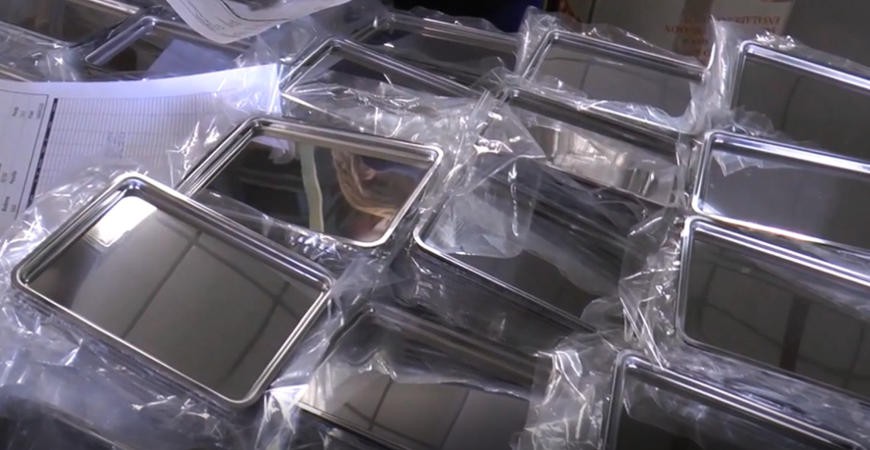18 % & 18/10 stainless steel
18% stainless steel and 18/10 stainless steel: what's the difference? How to choose?
Stellinox stamps two types of stainless steel, 18% stainless steel (international standard 430) and 18/10 stainless steel (international standard 304 L).
The difference between these two grades of stainless-steel is the nickel content: 18/10 stainless steel contains nickel, which reinforces its resistance against rust and its ability to be deep drawn. The price of 18/10 stainless steel is higher than that of 18% stainless steel.
However, an 18% stainless steel is completely resisting to rusting: if you think you have preparations with salt or a certain amount of blood that may stagnate in the dish for a long time, preferably choose 18/10 stainless steel.
In the catering sector, stainless steel is a very popular material and is very much appreciated and favoured by professionals. It is resistant, hygienic, versatile and is used in the production of many accessories, from pots and pans to trays, gastronorm containers and knife blades. But did you know that there are actually three families of stainless steel? The difference between each of them actually comes from changes within their atomic structure. In this article, we invite you to discover martensitic, austenitic and ferritic stainless steel.
Understanding the structure of stainless steel
Stainless steel is formed by iron atoms, crystallised by carbon and nickel. Iron is said to have a crystalline structure. To understand the difference between the three families of stainless steel, we need to look at the composition of these structures. In fact, it is the quantity of carbon and nickel within a crystalline structure that is at the origin of the particular properties of martensitic, austenitic and ferritic stainless steel. We will see this in a little more detail below in our article.
Martensitic stainless steel, a hard and resistant material
Martensite is an element that intervenes in the structure of the hardened steel. It therefore allows the creation of particularly hard kitchen utensils. Martensitic stainless steel is actually involved in the creation of knife blades, which then have a very high cutting power. On the other hand, stainless steel containing Martensite is much more brittle than any other stainless steel. Therefore, this material is not suitable for use in the production of containers, trays or crockery, where intensive use causes shocks and falls.
Austenitic stainless steel, suitable for an aggressive environment
We have just mentioned stainless steel crockery, trays and containers. To make them even more robust, they are made of austenitic stainless steel. Unlike martensitic stainless steel, austenitic stainless steel does not break. In addition, this material is highly resistant to corrosion and can be produced in many different shapes. It has other characteristics that are particularly interesting for the professional in the CHR industry, including excellent resistance to acidity, saline environments and high-pressure water jets.
The best known austenitic stainless steel is, of course, 18/10, a high-grade material for the manufacture of high-performance accessories, which can be found in the Stellinox online shop. This stainless steel actually consists of 18% chrome and 10% nickel, which makes it much more resistant to corrosion. Kitchen equipment made of chrome nickel 18/10 offers optimum food safety, as it remains stable even at extreme temperatures. In addition, it is extremely shock-resistant, making it the ideal accessory for professional catering.
Ferritic stainless steel, a compromise between martensitic and austenitic stainless steel
Ferritic stainless steel is less hard than martensitic stainless steel and less resistant than austenitic stainless steel. As a result, it is much more affordable. By investing in kitchen equipment made of ferritic stainless steel, it is possible to save a lot of money.

